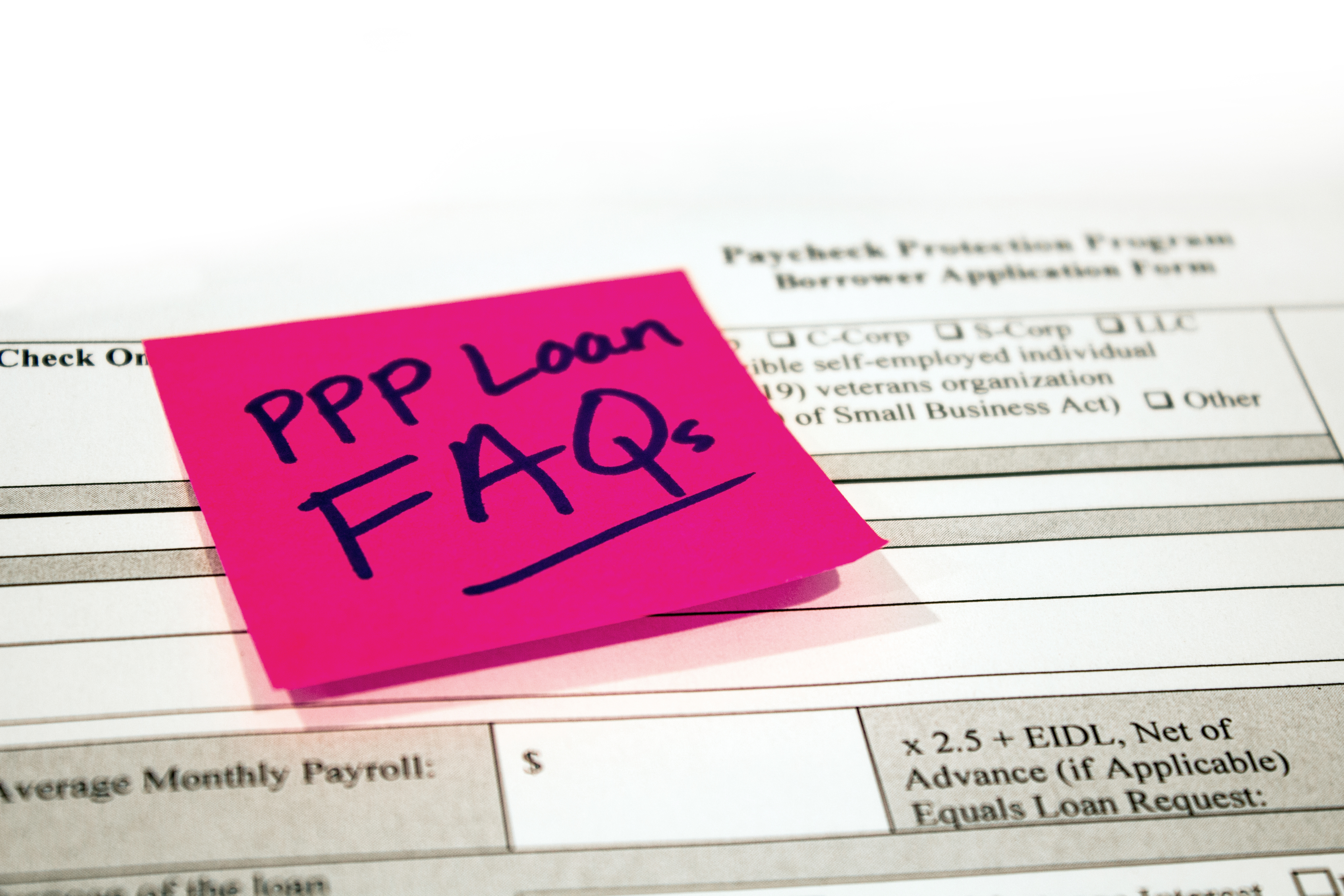Now that small businesses across the county have begun to receive their paycheck protection loan proceeds many will ask themselves, how do I insure I use these proceeds properly in order to maximize the portion that qualifies for forgiveness. Below are Q&A’s of some of the most commonly asked questions regarding loan forgiveness under the paycheck protection program (as provided by the American Institute of Certified Public Accountant’s, AICPA) We hope it answers some of the questions many of you have regarding the program.
NOTE: In the coming weeks we expect to continue to receive additional guidance and answers to questions as small businesses across the country begin utilizing PPP loan proceeds. We will continue to update you along the way.
When does the 8 week period begin to determine the amount of the forgiveness for the PPP loan?
- The 8 week period begins on the date the lender makes the first disbursement of the loan. The lender must make the first disbursement of the loan no later than 10 calendar days from the date of the loan approval.
What are the acceptable uses of the PPP funds for businesses other than self-employed individuals?
- Payroll costs, health care benefits, mortgage interest payments, rent, utility, interest payments on debt incurred prior to February 15, 2020, and/or refinancing an SBA EIDL loan made between January 31, 2020 and April 3, 2020.
What are the acceptable uses of the PPP funds for self-employed individuals.
- Owner compensation replacement (calculated based on 8/52 of 2019 net profit from Form 1040 Schedule C)
- Employee payroll costs (as defined by the interim rule)
- Business mortgage interest payments on real/personal property
- Business rent payments
- Business utility payments
- Interest payments on debt obligations incurred before February 15, 2020
- Refinancing an SBA EIDL loan made between January 31, 2020 and April 3, 2020
What amounts will be eligible for forgiveness for self-employed individuals?
The amount of the loan forgiveness will depend on the amount spent during the 8 week period on:
- Payroll costs as defined by the interim rule (does not include benefits for owners)
- Owner compensation replacement (limited to 8/52 of 2019 net profit and excluding any qualified sick or family leave equivalent amount for which a credit was claimed under FFCRA)
- Interest payments on mortgage obligations for real/personal property incurred before February 15, 2020
- Rent payments on lease agreements in force before February 15, 2020
- Utility payments under service agreements dated before February 15, 2020
*Note that for interest, rent and utility payments, the amounts must be deductible on Form 1040 Schedule C.
Are employee federal withholdings and employer payroll taxes on wages for the 8 week period included in payroll costs?
- The employee federal withholding is included in allowable payroll costs for the purposes of determining the amount to be forgiven. The employer federal payroll taxes (i.e. FICA and Medicare taxes) imposed on the gross payroll are not eligible payroll costs for the loan forgiveness calculation.
What are the restrictions on determining the amount of loan forgiveness for businesses other than self-employed individuals?
- At least 75% of the loan proceeds must be used for payroll costs. If salaries decrease by more than 25% for any employee who made less than $100,000 annualized in 2019 OR if the number of FTEs decreases, the forgiveness amount will be reduced. A loan calculator to assist in the determination of the forgiveness amount will be coming soon.
Do qualified sick and family leave wages which are eligible for a tax credit under FFCRA count toward payroll costs for the purpose of the forgiveness portion?
- For businesses that take this credit, the wages will be excluded from the determination of payroll costs.
What about if the business had employees who left for their own reasons? Or need to be fired due to performance issues? is the loan forgiveness still reduced for those employees?
- More guidance is needed on this issue. As the statute is written in the CARES Act, the forgiveness is tied to employee count comparisons and also specific employees and whether their pay was substantially reduced.
Are the expenses when determining forgiveness on a cash or accrual basis?
- More guidance is needed on this issue. The guidance provided discusses “payments”, but further clarification is needed.
Are these expenses tax deductible if the loan is ultimately forgiven?
- More guidance is needed on the treatment of the expenses related to the forgiveness portion of the loans. Based on what is known at this time, there is no specific provision in the CARES Act that makes these expenses nondeductible. However, IRC Section 265 may apply which states that no deduction is allowed for expenses attributable to tax-exempt income. However, IRC Section 265 may apply which states that no deduction is allowed for expenses attributable to tax-exempt income.
Is the forgiveness of the loan taxable income?
- No, the forgiveness of the loan does not constitute taxable income.
Are payments to related parties (such as rent) included in amounts eligible to be used to determine forgiveness?
- More guidance is needed in this area.
What documentation is required to be submitted to the lender for self-employed individuals to support loan forgiveness?
- certification that the documentation provided is true and correct and the amount for which forgiveness is required was used to retain employees, and make interest, rent and utility payments
- If the self-employed individual has employees, Form 941 and state quarterly tax reporting forms or equivalent payroll processor records that correspond to the covered period
- Evidence of business rent, mortgage interest payments or utility payments for loan proceeds used for these purposes
- 2019 Form 1040 Schedule C



